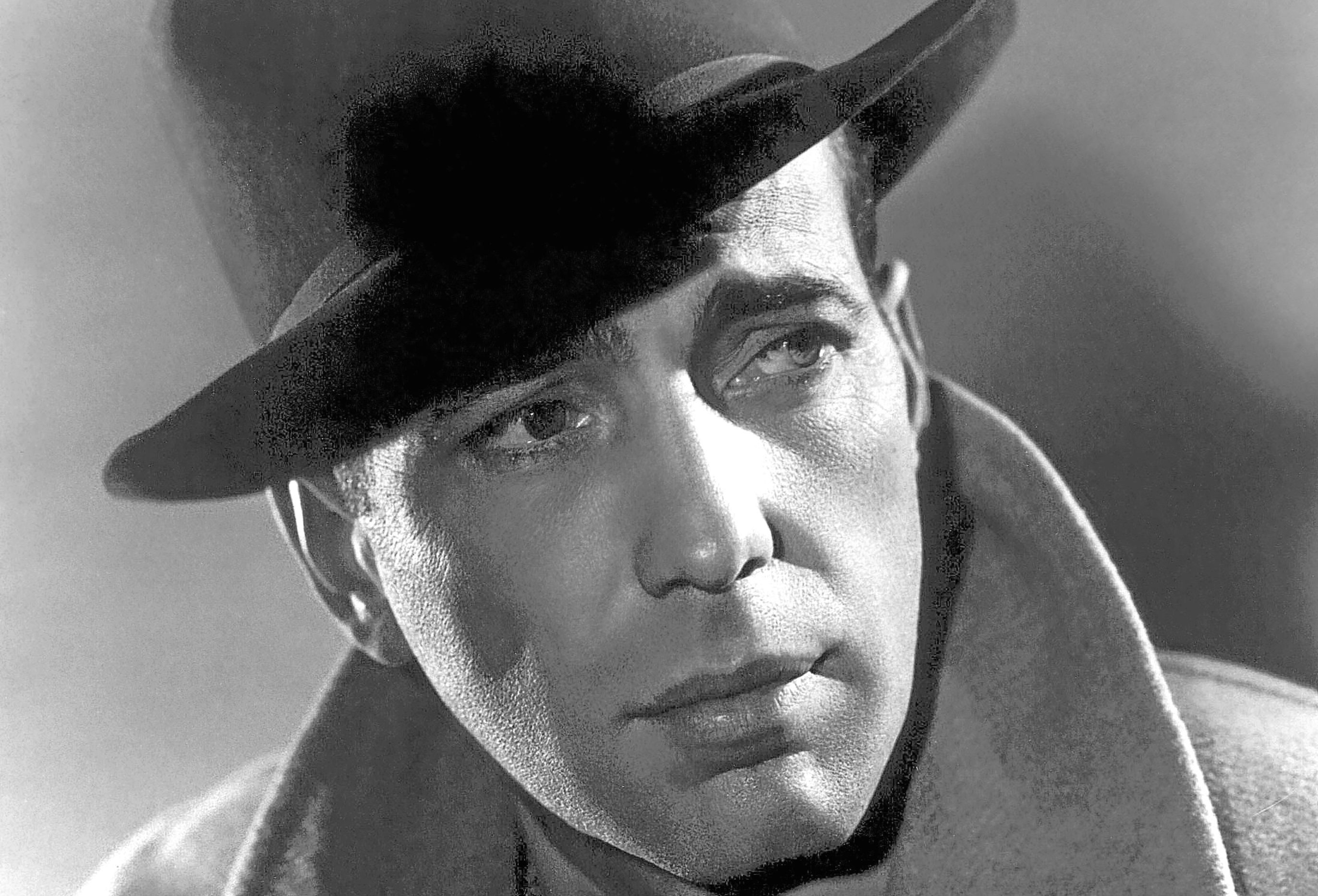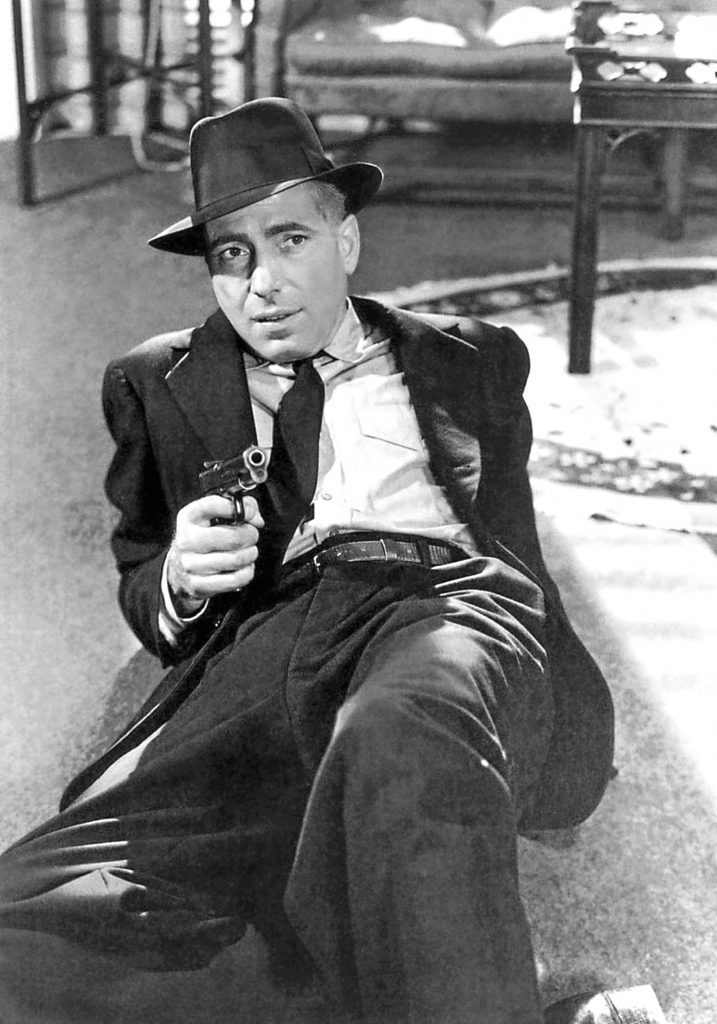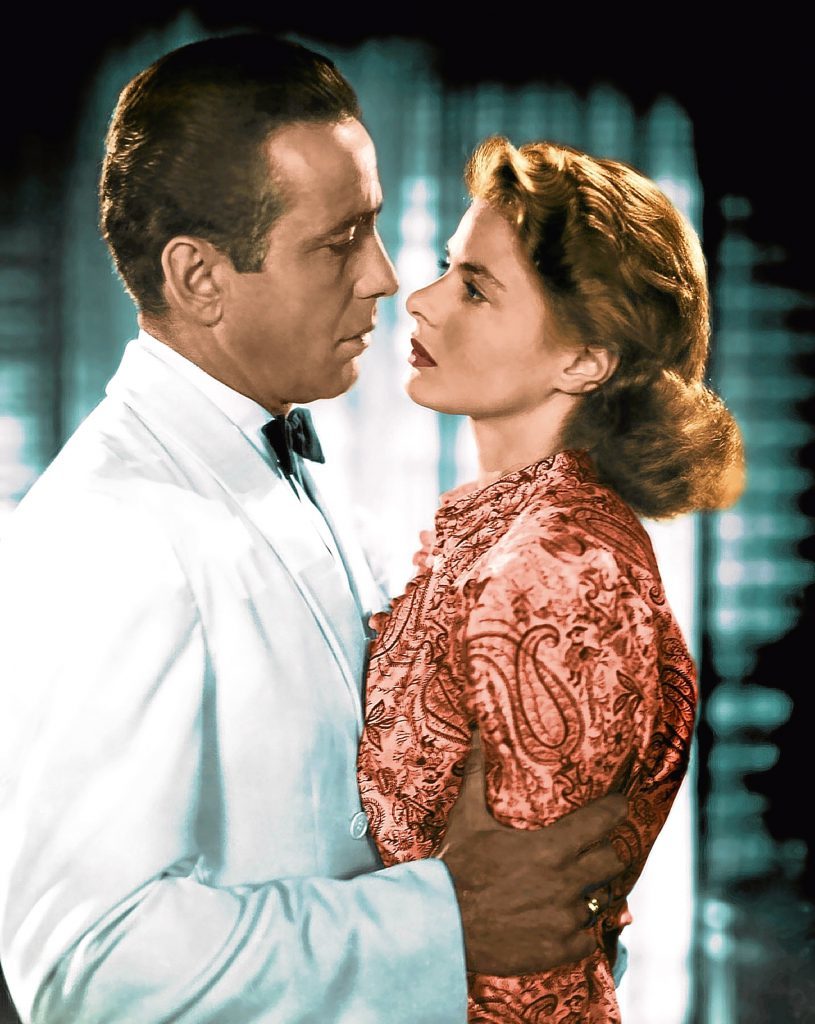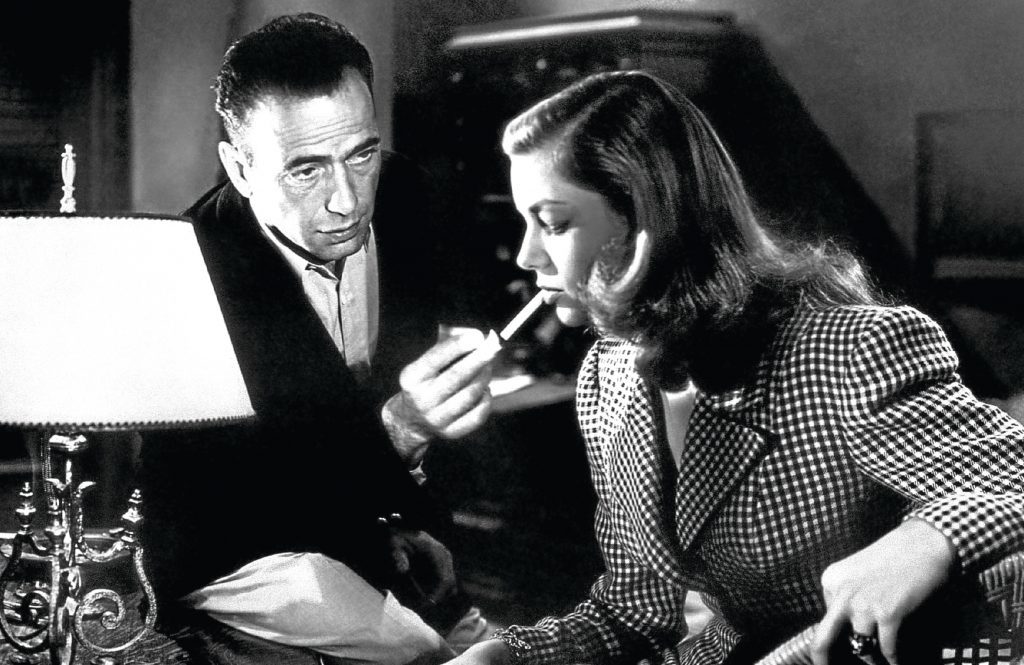
TO many film fans, he was simply the best — Humphrey Bogart is a Hollywood giant to match any other superstar of any era.
Saturday is 60 years since his death in 1957, aged just 57, but Bogie had managed to fit in plenty during his short time with us.
There was the 30 years’ acting, 75 movies, four wives in less than 20 years, three Oscar nominations including one win, and being voted Greatest Male Star of Classic American Cinema.
Then there was a voice, dress sense and general style that would all be copied by many, bettered by none, and he inspired whole generations of men to emulate him.
All the more odd, then, that being a film star never occurred to him in his formative years.
Bogart, born in New York on the last Christmas Day of the 19th century, had done time with the US Navy during the Great War, then a bit of theatre work, before deciding on a finance career, or maybe work behind the scenes in cinema.
To be in front of the cameras, though, the main star, watched by millions?
It had never even crossed his mind!
When the stock market crash of 1929 left precious few able to put on theatre shows, and potential audiences without the cash to come and see them, Bogart realised he had to change his plans.
By 1936, with The Petrified Forest, he realised that this film lark was rather fun.
Playing gangster Duke Mantee, fleeing the cops and desperate, he loved the role and the world loved seeing him do it.
Angels With Dirty Faces, two years later, saw him start to be typecast as a gangster, something Bogart would fight by trying different jobs to shake off that sort of reputation.
The Return Of Doctor X, in 1939, was a sci-fi horror flick, with Bogie in the lead role.
If it was quite different from his mob movies, it didn’t tickle his fancy, and for the rest of his life, this was one of the films Bogart hated talking about.
Swing Your Lady, a country musical comedy, was another that he hated, and some reckon Bogart was getting close to quitting his acting career if the studios hadn’t come up with stuff that really suited him.
He’d bemoan the fact that directors took one look at him and cast him as a scary baddie.
“There must be something in my tone of voice, or this face — something that antagonises everybody. Nobody likes me on sight. I suppose that’s why I’m cast as the heavy,” he said.
Not that his love life was any more inspiring than his career, in those dark days — he had met actress Helen Menken in 1922, married her in May, 1926, and was divorced from her 19 months later.
Within five months, he’d married another actress, Mary Philips, and though this one lasted longer, it would also end in divorce.
His parents had separated, too, and in 1934, Bogart was at his father’s deathbed, finally managing to blurt out how he loved him, and vowing to pay off his old man’s debt.
Humphrey would wear his late father’s gold ring for most of his life after this, and you can see it in many films, and he did get his debt cleared, too.
His third wife, yet another actress, was Mayo Methot, and their marriage was a bit like a very dramatic movie.
Both smoked like chimneys and drank life fish, both were extremely volatile, easy-to-enrage people, and both, sadly, liked to wind each other up.
Said to be paranoid and physically threatening when she had a drink in her, it’s hard to find a photo of Mayo in which she isn’t holding a drink (he likewise).
Convinced Bogart was cheating on her, she’d drink herself into a fury and then the neighbours would listen — there was no alternative — as crockery, plants and furniture were thrown around the house.
Mayo set the house on fire, stabbed him, slashed her wrists on numerous occasions, and then they’d sober up, make up and life would go on until the next row.
They became known as The Battling Bogarts, and it was little surprise when they called it off after seven stormy years.
His longest marriage, of course, would be to his great co-star Lauren Bacall, with whom he had a son and daughter. Together until his death, they were as in love as they look on the big screen.
Well, she was one of the most-fancied women on Earth, after all, and he was a magnet for the ladies himself!
With such a tempestuous third marriage, it’s all the more remarkable that Bogart’s real rise to superstardom came during the years with Mayo.
It was in 1941 that High Sierra put him into the top bracket, despite the director not fancying him as a leading man.
That was to prove a fine year for Bogart, with The Maltese Falcon and his role as Sam Spade making him a household name around the globe.
After the classic Casablanca in ’42, he teamed up with Bacall in 1944’s To Have And Have Not, and The Big Sleep, The African Queen and many more huge hits would see him dominate cinema for years.
Oesophageal cancer would kill him too soon, but the remarkable Humphrey Bogart packed in more than most of us do in a far longer life.

Enjoy the convenience of having The Sunday Post delivered as a digital ePaper straight to your smartphone, tablet or computer.
Subscribe for only £5.49 a month and enjoy all the benefits of the printed paper as a digital replica.
Subscribe

